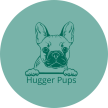Canine Art Therapy
Unleashing Your Dog's Inner Picasso

Art therapy is a form of expressive therapy that encourages self-expression and emotional healing through the creative process. While it's typically associated with humans, canine art therapy is an emerging trend that allows dogs to explore their creativity while offering numerous benefits for their mental and emotional well-being. In this article, we'll delve into the world of canine art therapy, discuss its benefits, and provide tips for getting started with dog-friendly art materials and projects.
Benefits of Canine Art Therapy:
Mental Stimulation: Engaging your dog in art projects can help keep their mind sharp and active, reducing boredom and related behaviors such as excessive barking or destructive chewing.
Stress Relief: Art therapy can provide a calming and soothing experience for dogs, helping to alleviate stress and anxiety. Research shows that engaging in activities that promote relaxation can significantly improve a dog's overall well-being (Reference: McConnell, Patricia B., et al. "The effect of a canine-assisted therapy program on the psychological health of college students." Anthrozoös 30.1 (2017): 131-139).
Bonding Experience: Participating in art projects with your dog can strengthen the bond between you and your furry companion, fostering trust and companionship.
Confidence Building: As your dog learns to navigate and interact with various art materials, they will gain confidence in their ability to tackle new challenges.
Emotional Expression: Just like humans, dogs can experience a range of emotions. Canine art therapy can provide an outlet for emotional expression, helping your pet process and cope with their feelings.
Getting Started with Canine Art Therapy:
Choose Dog-Friendly Art Materials: Select non-toxic, washable, and pet-safe art materials for your dog's projects. Some options include water-based paints, chalk, and crayons. Make sure to avoid materials that may pose a choking hazard.
Create a Safe Workspace: Set up a dedicated workspace for your dog's art projects, ensuring it's easy to clean and free of potential hazards.
Encourage Exploration: Allow your dog to explore and interact with the art materials at their own pace, offering praise and encouragement as they engage with the project.
Offer Assistance: Your dog may need guidance and support as they navigate the creative process. Offer gentle assistance when needed, but avoid forcing your dog to participate if they're not interested.
Document Your Dog's Artwork: Preserve your dog's masterpieces by taking photographs or framing their artwork. This not only creates lasting memories but also allows you to track your dog's progress and development over time.
Dog-Friendly Art Projects:
Paw Print Art: Create lasting memories of your dog's unique paw prints by pressing their paws into washable, non-toxic paint, and then onto paper or canvas. The Pawcasso Paw Print Kit (product mention) is a great option for creating paw print art.
Treat Trails: Encourage your dog's creativity by creating trails of dog-safe paint on a canvas or large piece of paper, and then placing treats along the trail. Your dog will follow the treat trail, leaving a trail of colorful paw prints behind.
Collaborative Paintings: Work together with your dog to create a unique piece of art. Apply paint to a canvas or paper and encourage your dog to move the paint around with their paws, nose, or even their tail.
Abstract Expressionism: Allow your dog to freely explore and experiment with various art materials and techniques, such as splattering paint, rolling in paint-soaked fabric, or dragging toys through paint.
Always supervise your dog during art therapy sessions and ensure all materials are safe and non-toxic. With the right approach, canine art therapy can provide a fun and enriching experience for both you and your furry companion.
Considerations for Canine Art Therapy:
Know Your Dog's Preferences: Observe your dog's individual personality and preferences when selecting art materials and projects. Some dogs may enjoy getting messy with paint, while others may prefer a more tactile experience with chalk or crayons.
Keep Sessions Short and Fun: Start with shorter art therapy sessions and gradually increase the duration as your dog becomes more comfortable and engaged. Make sure to keep the sessions enjoyable for your dog, ensuring they're not overwhelmed or stressed.
Don't Expect Perfection: Remember that the goal of canine art therapy is not to create a perfect piece of art but to provide an enjoyable and enriching experience for your dog. Embrace the imperfections and celebrate your dog's unique artistic expression.
By incorporating canine art therapy into your dog's routine, you can provide them with valuable mental stimulation, a creative outlet, and a bonding experience that will strengthen your relationship.
About the Creator
HuggerPups
Welcome to HuggerPups 🐾🐕🐈🐾 We are your ultimate source of all things pets






Comments
There are no comments for this story
Be the first to respond and start the conversation.